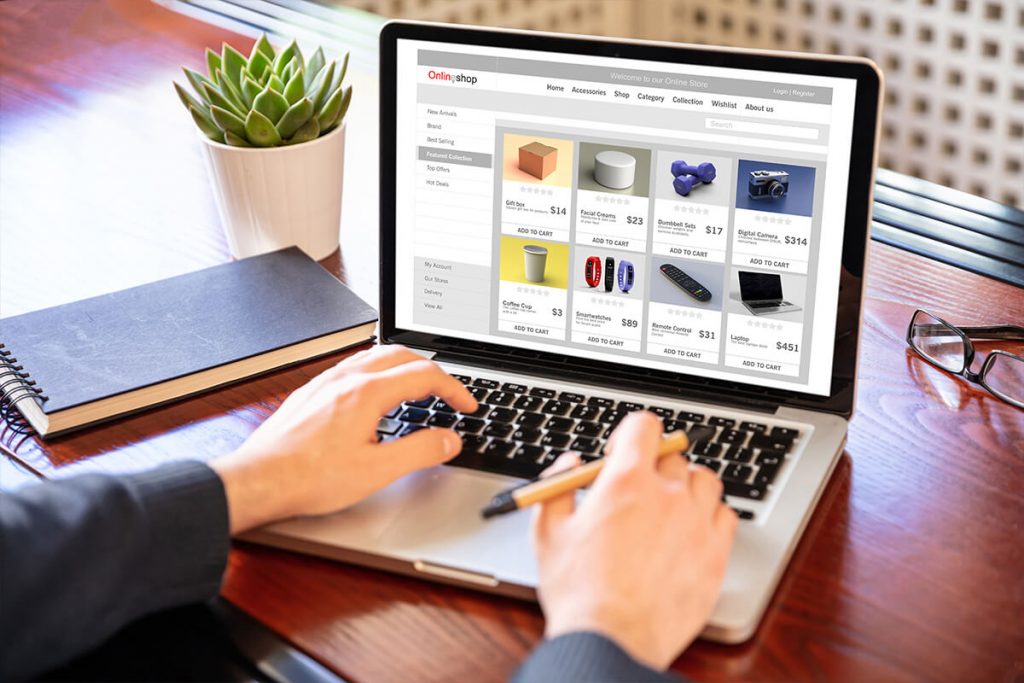
Showcase Your Skills: Creating a Killer Web Design Portfolio
A good web design portfolio is crucial for any designer trying to build their name and win their ideal job in the competitive job market of today. In addition to showcasing your design abilities, a well-made portfolio also emphasizes your creativity, problem-solving ability, and general design philosophy.
To differentiate yourself from the competition as a web designer, you must exhibit your distinctive aesthetic, adaptability, and technical proficiency. This thorough tutorial will assist you in building an appealing portfolio that successfully displays your abilities and talents, whether you are a beginning designer or an experienced professional looking to update your portfolio.
This manual covers everything from choosing the appropriate design components and developing a visually appealing layout to exhibiting your greatest work and managing your portfolio.Thus, if you’re prepared to advance your web design career, keep reading to find out how to create an attractive portfolio that will help you stand out in the cutthroat field of web design.
Preparation

Preparation is essential for producing a good design portfolio. Spend some time finding inspiration before starting the creative process. Take note of the elements of presentation and design that you like in the portfolios of other designers whose work you admire. This will assist you not only stay current with the newest design trends, but will also offer you an idea of what works and what doesn’t. When you find inspiration, start to hone your personal style and identify your advantages and disadvantages. Understanding what makes you unique as a designer and what areas you might want to concentrate on improving can be gained from this practice. Moreover, you can generate suggestions fora description of how you want your portfolio to appear and feel, taking into account elements like color scheme, typography, and layout.
By planning ahead and gathering ideas, you’ll be well on your way to building a portfolio that represents your individual design taste and abilities. It’s time to begin developing your portfolio once you’ve gathered inspiration and come to a clear knowledge of your individual style. There are numerous templates and themes that you may use to build a visually attractive and polished portfolio if you’re using WordPress. Search for themes with a simple, contemporary design and lots of white space to let your work stand out.
To present your work in a dynamic and interesting manner, you might also want to think about using plugins like a gallery plugin or a slider plugin. Also, given that more and more people are accessing websites from their smartphones and tablets, it’s critical to ensure that your portfolio is mobile-friendly. By following these instructions, you can make a design portfolio that not only displays your talent but also wows clients and employers.
Creating Your Porfolio:
To demonstrate their skills and land their dream job, web designers must build an appealing portfolio of their work. The portfolio should highlight the designer’s abilities and set them out from the competition. This article offers tips on how to construct a successful web design portfolio, including choosing the best platform, coming up with a layout and structure that works, showing the greatest work samples, making the portfolio search engine-friendly, and regularly updating it. Maintaining a nice look, getting input from coworkers, friends, and family, and keeping your portfolio brief and limited to your greatest work are also crucial. You can make sure your portfolio accurately represents your talents and aids in your search for your ideal employment by paying attention to these recommendations.

The requirement to demonstrate your capacity to address real-world issues is another key factor to take into account while building a successful web design portfolio. Prospective customers or companies are interested in seeing how you approach design difficulties and develop original solutions. Adding case studies that describe your design methodology and problem-solving techniques is a good way to demonstrate your talents. Make sure to include details about the difficulties you encountered, your design approach, and the results of your effort. You can prove your value as a designer and differentiate yourself from the competition by giving specific examples of how you’ve used design to help organizations achieve their objectives. Also, making it simple for prospective clients or employers to contact you by offering a clear call-to-action to contact each other and begin a discussion about collaborating.
- Selecting the best platform: When selecting a platform for your portfolio, take pricing, customization possibilities, and simplicity of usage into account. We advise using WordPress. WordPress is a great website to use to display your design portfolio. You may develop a visually attractive and captivating portfolio that will amaze clients and employers with its robust content management system and vast customization possibilities. You might start by picking one of the many WordPress themes made especially for portfolios. These themes frequently have modifiable project pages, galleries, and other design components to help you present your work in the best light. Also, WordPress plugins can be used to improve the functionality of your portfolio and make it even more dynamic and engaging. WordPress is a fantastic option for building an appealing online portfolio, regardless of whether you work as a freelance designer or for a design firm.
- Look for inspiration, this could be other websites you like or award-winning websites. Build your portfolio up. For basic programming concepts and tutorials, Codecademy is a good starting point.

3. Creating the structure and layout: Your portfolio should be logically arranged and simple to use. Layout your work simply and neatly and think about using white space well to make it stand out.
4. Showcasing your work samples: To include in your portfolio, pick the greatest examples of your work and arrange them so they are visually appealing. For context, give a succinct explanation of each project.
5. Write your biography and include references: Your biography should provide a summary of your education and professional background. Include endorsements from clients or coworkers to demonstrate your skills and establish credibility with prospective employers.
6. Optimizing your portfolio for search engines: Ensure your portfolio is optimized by including relevant keywords and meta descriptions. This will make it easier for potential employers to find you.
To learn more, watch this YouTube Tutorial but Flux Academy about Web Design Porfolios.
Maintenance and Updating

For the purpose of showing one’s abilities and achievements, maintaining and upgrading a portfolio is essential. In order to keep the portfolio current and applicable, it’s critical to frequently update new projects and accomplishments. As one gets experience, it’s critical to promote more recent, impressive work while removing earlier, less spectacular ones. Also, keeping the portfolio updated frequently shows a dedication to development and improvement, which may be enticing to future customers or employers. Also, it’s crucial to check that the portfolio is simple to navigate and visually appealing, as these factors can significantly affect the impression viewers have of it. In order to discover areas for improvement and make sure that the portfolio appropriately portrays one’s abilities and accomplishments, it can be good to ask peers or mentors for comments.
It’s critical to demonstrate a variety of talents and diversity in the work samples included in the portfolio in addition to updating it frequently and getting input from mentors and peers. This can show a designer’s adaptability and flexibility, which can be very appealing to prospective clients or companies who might have different demands and preferences. A succinct explanation or description of each project, noting particular difficulties and the solutions adopted, is also beneficial. This not only gives the task perspective, but it also demonstrates how to solve problems and think critically. Also, adding components like endorsements or testimonials from prior customers or coworkers can reinforce the portfolio and increase trust. By regularly modifying and enhancing the portfolio, andpresenting a well-rounded selection of work, web designers may effectively demonstrate their skills and raise their chances of acquiring their ideal job or clientele.
When it comes to maintaining and updating your portfolio, have the following in mind:
- Include new projects: As soon as a new project is finished, include it in your portfolio. This will present a thorough picture of your work to potential employers and highlight your most recent successes.
- Remove out-of-date content: It’s critical to periodically evaluate your portfolio and delete any information that is out-of-date or irrelevant. This will assist in keeping your portfolio organized and concentrated on your present competencies.
- Update your biography: Ensure that it correctly reflects the experience and abilities you currently possess. This can help prospective employers get a comprehensive picture of your qualifications and background.
- Maintain a pleasing aesthetic: To maintain a pleasing aesthetic, regularly assess your portfolio’s design and make any necessary modifications. Use high-quality photographs and keep your portfolio’s appearance and feel consistent. Here are some examples.
- React to criticism: Request comments on your portfolio from prospective employers and clients.

Make any necessary modifications and improvements using this input. Keep in mind that your portfolio serves as a representation of your work and skills, therefore it should be kept current and in good condition. You may make sure that your portfolio appropriately depicts your skills and aids in helping you find your dream job by following these suggestions.
Knowing what to put in and what to keep out of your portfolio is equally crucial. It’s crucial to show off your greatest work, but it’s also crucial to keep your portfolio brief. Few initiatives that are adequately presented are preferable to a huge list of subpar ventures. Ask yourself if the project exhibits your originality, is visually appealing, and is indicative of your talents when choosing which projects to include. Don’t forget to include any pertinent information as well, such as the tools and technologies you employed, the size of the team you collaborated with, and your position within the project.
Being successful in the industry of web design requires you to build and maintain a portfolio. You can build a portfolio that truly represents your skills and makes you stand out from the competition with the right platform, design, content, and optimization. This article has hopefully given you the tools you need to build an effective portfolio that will advance your career, whether you’re just starting out or want to update your current one.
Just as crucial as building your portfolio is maintaining and updating it. As you continue to improve your trade, be careful to update your portfolio with fresh projects and get rid of any old or pointless material. To keep your portfolio current and visually appealing, evaluate your biography and design frequently. You can make sure that your portfolio always appropriately represents your talents and abilities and helps you find your dream job by using the advice in this article.
When developing a web design portfolio, having a strong online presence is equally important. Ensure that your portfolio has a responsive design that works well on desktops, laptops, tablets, and smartphones, and that it is accessible on a variety of devices. You might also think about including a blog in your portfolio to demonstrate your expertise in the field. Blogging about your experiences and offering your opinions on the newest web design trends can highlight your enthusiasm for the industry and demonstrate to prospective employers that you’re committed to remaining current.
Finally, don’t be reluctant to request input. Ask your coworkers, friends, and family for their feedback on your portfolio. They could offer advice on how to enhance your portfolio or identify areas that require greater focus. Feedback can also point up areas for improvement, which can advance your career as a web designer.

In conclusion, building a web design portfolio is a continuous process that demands commitment and diligence. The benefits, however, are very worthwhile. You may get the respect you deserve, distinguish yourself from the competition, and obtain your ideal job with a great portfolio that appropriately depicts your skills.





